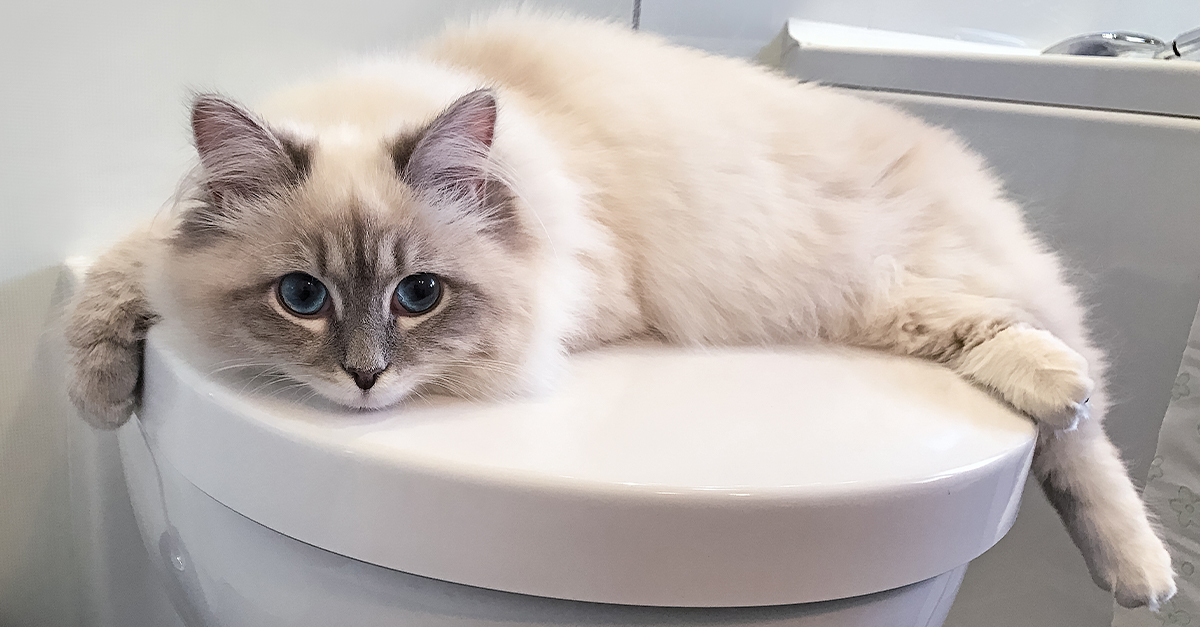Potential Risks of Flushing Cat Poop Down Your Toilet - Advice for Safer Handling
Potential Risks of Flushing Cat Poop Down Your Toilet - Advice for Safer Handling
Blog Article
They are making several great points on How to Dispose of Cat Poop and Litter Without Plastic Bags as a whole in the content below.

Introduction
As pet cat proprietors, it's necessary to be mindful of just how we get rid of our feline pals' waste. While it may seem hassle-free to flush cat poop down the toilet, this technique can have detrimental repercussions for both the environment and human health.
Environmental Impact
Purging feline poop presents unsafe microorganisms and bloodsuckers right into the water system, posing a considerable risk to water environments. These impurities can negatively affect aquatic life and concession water top quality.
Health Risks
In addition to environmental problems, flushing feline waste can additionally position health dangers to human beings. Cat feces might consist of Toxoplasma gondii, a parasite that can trigger toxoplasmosis-- a potentially serious health problem, particularly for expecting ladies and people with damaged body immune systems.
Alternatives to Flushing
Fortunately, there are safer and much more liable ways to get rid of pet cat poop. Think about the complying with alternatives:
1. Scoop and Dispose in Trash
The most common approach of disposing of cat poop is to scoop it into a naturally degradable bag and throw it in the garbage. Make certain to use a devoted litter scoop and take care of the waste promptly.
2. Use Biodegradable Litter
Go with naturally degradable feline trash made from materials such as corn or wheat. These clutters are eco-friendly and can be securely taken care of in the trash.
3. Hide in the Yard
If you have a lawn, think about hiding feline waste in an assigned area far from veggie gardens and water sources. Make sure to dig deep enough to prevent contamination of groundwater.
4. Set Up a Pet Waste Disposal System
Purchase an animal waste disposal system especially made for pet cat waste. These systems use enzymes to break down the waste, lowering odor and environmental influence.
Conclusion
Accountable pet dog ownership prolongs past supplying food and shelter-- it also involves correct waste administration. By refraining from purging cat poop down the commode and going with alternative disposal methods, we can reduce our ecological impact and shield human health.
Why Can’t I Flush Cat Poop?
It Spreads a Parasite
Cats are frequently infected with a parasite called toxoplasma gondii. The parasite causes an infection called toxoplasmosis. It is usually harmless to cats. The parasite only uses cat poop as a host for its eggs. Otherwise, the cat’s immune system usually keeps the infection at low enough levels to maintain its own health. But it does not stop the develop of eggs. These eggs are tiny and surprisingly tough. They may survive for a year before they begin to grow. But that’s the problem.
Our wastewater system is not designed to deal with toxoplasmosis eggs. Instead, most eggs will flush from your toilet into sewers and wastewater management plants. After the sewage is treated for many other harmful things in it, it is typically released into local rivers, lakes, or oceans. Here, the toxoplasmosis eggs can find new hosts, including starfish, crabs, otters, and many other wildlife. For many, this is a significant risk to their health. Toxoplasmosis can also end up infecting water sources that are important for agriculture, which means our deer, pigs, and sheep can get infected too.
Is There Risk to Humans?
There can be a risk to human life from flushing cat poop down the toilet. If you do so, the parasites from your cat’s poop can end up in shellfish, game animals, or livestock. If this meat is then served raw or undercooked, the people who eat it can get sick.
In fact, according to the CDC, 40 million people in the United States are infected with toxoplasma gondii. They get it from exposure to infected seafood, or from some kind of cat poop contamination, like drinking from a stream that is contaminated or touching anything that has come into contact with cat poop. That includes just cleaning a cat litter box.
Most people who get infected with these parasites will not develop any symptoms. However, for pregnant women or for those with compromised immune systems, the parasite can cause severe health problems.
How to Handle Cat Poop
The best way to handle cat poop is actually to clean the box more often. The eggs that the parasite sheds will not become active until one to five days after the cat poops. That means that if you clean daily, you’re much less likely to come into direct contact with infectious eggs.
That said, always dispose of cat poop in the garbage and not down the toilet. Wash your hands before and after you clean the litter box, and bring the bag of poop right outside to your garbage bins.
https://trenchlesssolutionsusa.com/why-cant-i-flush-cat-poop/

Do you really like more info about Can You Flush Cat Poop Down The Toilet?? Make a remark below. We will be pleased to know your feelings about this article. We hope that you come back again soon. Are you aware of another person who is excited by Can You Flush Cat Poop Down The Toilet?? Do not hesitate to promote it. Thanks a lot for your time spent reading it.
Schedule An Appointment Report this page